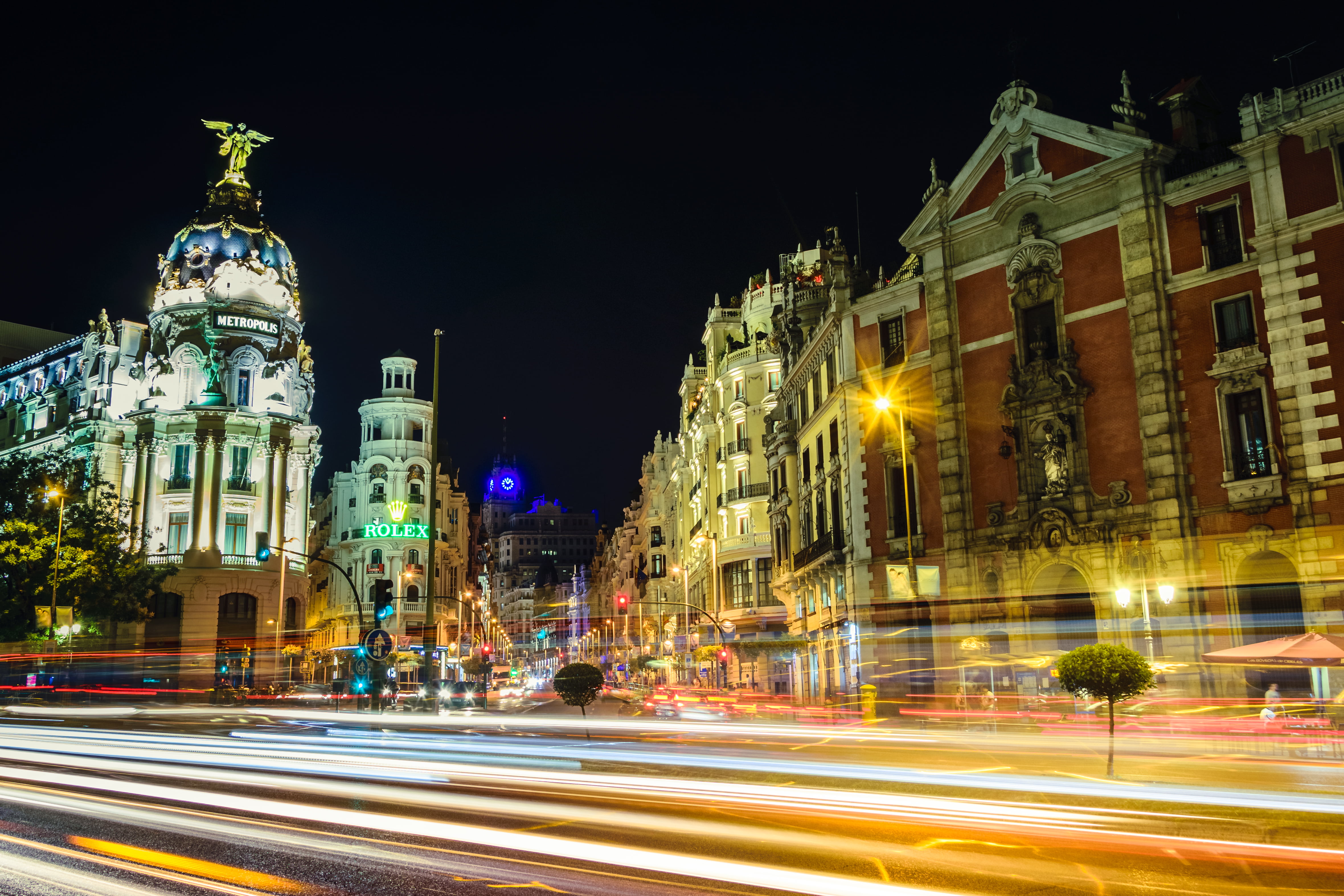How to capture motion and moving objects
Published: 23.03.2021

Beginner photographers have probably seen mesmerizing photos capturing movement. There are several ways to achieve these photos, each with different goals in mind.
Many photographers capture movement simply to convey the motion of the object. But there are other reasons. Movement can also convey mood. Trees rustling in the wind speak of tranquility, while a crowd gathering in a bustling urban neighborhood speaks of haste.
You can use motion to remove elements in the scene that may distract the viewer. For example, you can take a photo of a person standing on a street corner with cars driving behind them. By blurring everything except your main subject (the person on the corner), you can eliminate potential distractions and focus the viewer's attention.
Main techniques for creating the motion effect
1. Blurred object in focus against a background.
Suppose you are photographing a moving train against a wall lined with trees. You can blur the train, keeping the trees in focus. This will instantly convey to the viewer that the train is moving fast. To achieve this, you should use a long exposure.
2. Blurred background with object in focus.
This second method allows you to keep the object in focus while the background blurs. In the example with a moving train, the train will be in focus while the wall of trees will be blurred, thus conveying the movement of the train. Like in the first method, you will need to use a long exposure. However, instead of using a tripod, you will pan the camera in the direction of the moving object.
Many of the best and most memorable moments in life are in motion. But when trying to take a photo in motion, most objects come out blurry. So how do you take a photo in motion? Here are a few simple tips for beginner photographers.
Shutter speed
When an object is in motion and you want to take a picture, for example, of a basketball player shooting the ball, choose a short exposure time of at least 1/500 of a second or higher. However, keep in mind that short exposure times can result in underexposed photos. A short exposure limits the amount of light reaching the image sensor, so the higher the exposure time, the more likely your photos will be dark. This may not be a big issue outdoors, but if you are indoors, use a flash, increase the ISO, or adjust the aperture.
From the great photos that you will definitely take, create a Light album. You don't need to print the photos separately for this. We will print your photos directly on the pages of the Light album. Upload your images to the free editor Mapi7 and create a thematic Light album. You can upload photos from your phone.
Aperture increase
The diaphragm is the opening through which light enters the image sensor in the camera. Choose a low diaphragm value to open it up and allow more light to pass through. This can help solve the problem of low lighting due to a short exposure. Keep in mind that increasing the diaphragm reduces the depth of field in the photograph. This means that besides the subject being photographed, other elements in the photo will be out of focus. A low diaphragm value (f2.8) will create the impression that the entire background is out of focus.
Use the flash
Using flash when shooting moving objects is an excellent solution in low light conditions when using a shorter exposure. Flash can easily fix dark shots. However, most cameras have a flash with a very small range. This means that you need to be within a meter of the subject. Also, during many events (for example,sportingFlash cannot be used, as they can be very distracting.
The secret to achieving a clear focus on a moving object is to increase the shutter speed and use flash for dark photos, increase the aperture, or use high ISO sensitivity.
Use filters
Filters are the last way to reduce the risk of overexposure when shooting moving objects in direct light. Use a neutral density (ND) filter. Neutral density filters reduce or change all wavelengths of light equally. The effect is a reduction in light intensity without changing the color. ND filters are a great option when trying to capture motion blur in bright sunlight.
Panoramic
Imagine a frame with city lights and a passing car. If you don't know how to create the effect of a moving photo, keep the camera still so it can capture the city lights. When the car passes by, the camera will capture it as a light trail.Panningworks in reverse order. Instead of holding the camera still, you move - pan - to follow the moving car. As a result, the car stays in focus, while the rest of the city blurs behind it.
To get beautiful photos, you need to practice.
How to take a photo in motion on iPhone
It is not necessary to use a professional camera to get great shots. To take a high-quality long exposure shot on an iPhone, you need a tripod, any stand, or a flat surface to place your smartphone on. The key to successful long exposure photography is the absence of vibration. The simplest option is to use the standard iPhone function (iOS 11 and newer) - Live Photos. A higher quality alternative would be to use an app for long exposure photography such as Slow Shutter Cam or Spectre Camera.
To take a photo in motion on Android, you will need to install a special application from the Play Store (for example, VSCO Cam, Google Camera, or ProShot).
To capture motion blur:
- Reduce the shutter speed. Motion blur is directly proportional to an increase in shutter speed.
- Use a smaller aperture to let less light into the camera lens. If there is too much light and the photo is overexposed, you need to decrease the exposure by increasing the aperture number.
- If you find it inconvenient to shoot in manual mode and struggle to adjust the settings yourself, the shutter speed priority mode will come to the rescue.
- Reduce the ISO. To create a photo with a motion effect, you will need a low ISO. If you are shooting during the day in sunlight, ISO 100 will be suitable.
- Stabilize the camera to avoid unwanted shaking.
To edit photos:
- Import your photo into Photoshop.
- Select the part of the image you want to blur using the Pen Tool.
- Go to the top panel, where you will find: Filter> Blur> Motion Blur.
- Choose the angle and blur distance in the window.
- Accept the changes to see the motion blur effect.
Great photos deserve unique framing. Print your cool shots in a polaroid style. Fans of instant photography from the 90s may experience familiar feelings when holding a polaroid-style photo. Those unfamiliar with traditional polaroids will enjoy the square images with space for captions.
Motion blur is a great tool for any photographer. Play around, see what you like, and shoot!











